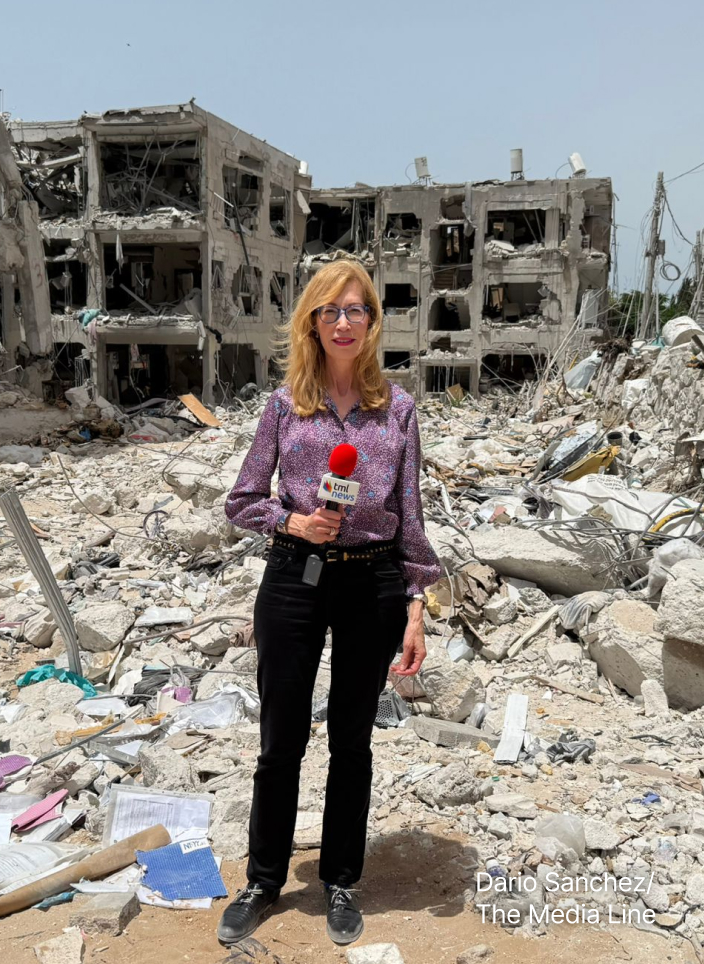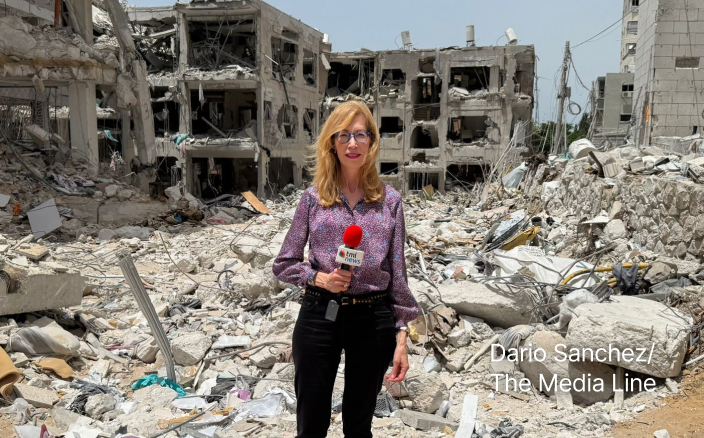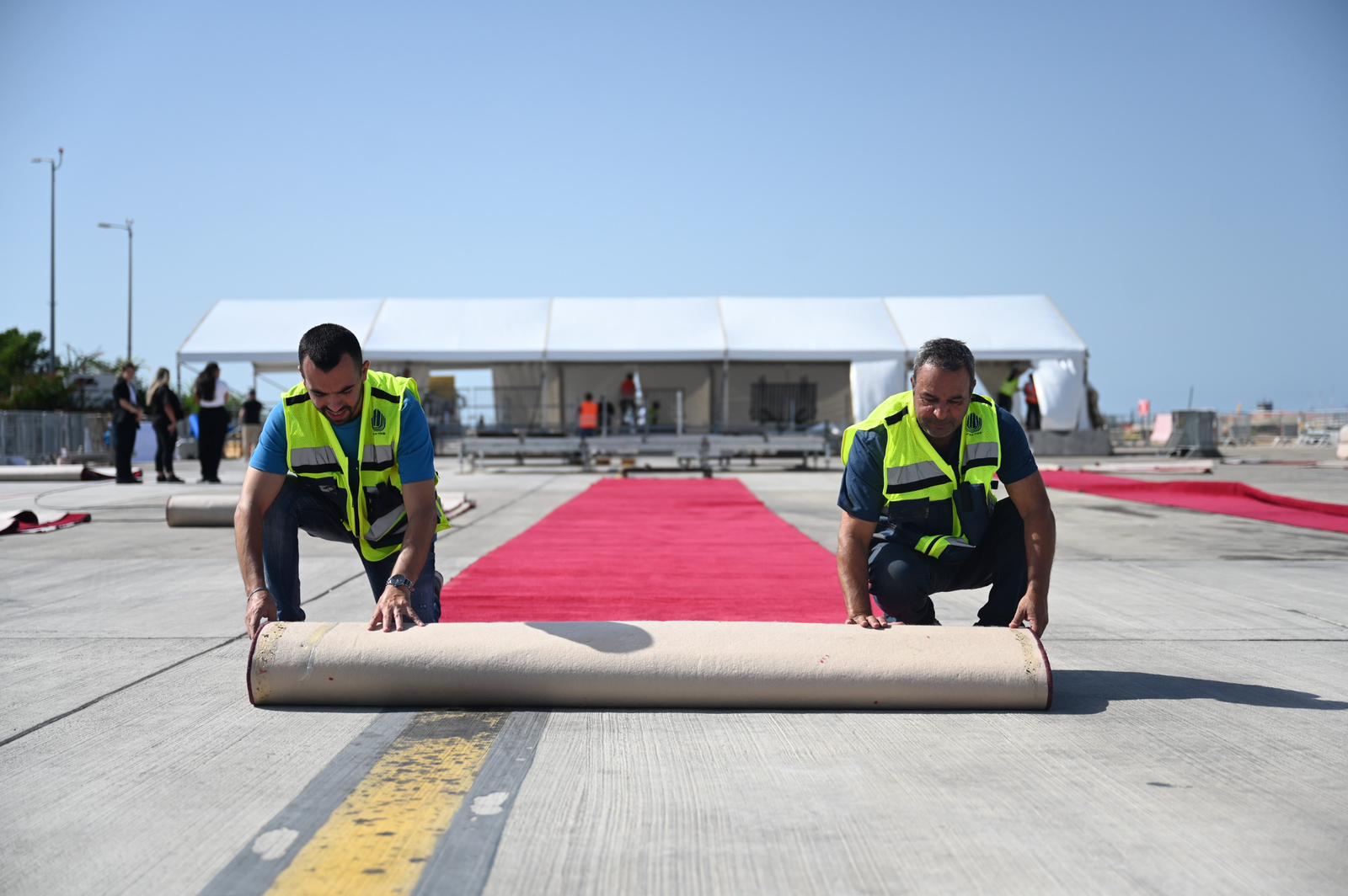Large signs bearing the image of US President Donald Trump now dominate the billboards of Jerusalem and Tel Aviv, as Israel braces for 24 to 48 hours of powerful emotion—the long-awaited return of most of the 48 hostages still held in Gaza, and the arrival of the man many Israelis credit for making it happen.
Dr. Mike Evans, founder of the Friends of Zion Museum, launched a nationwide billboard campaign this week declaring, “Cyrus the Great is alive.”
President Trump is the only person in the world who could have brought about the peace agreement and the return of the Israeli hostages, and there is no doubt that he is Cyrus the Great
“President Trump is the greatest friend the State of Israel has ever had in the White House,” Evans said in a statement. “His moral clarity, courage and decisive leadership changed the course of history in the Middle East. President Trump is the only person in the world who could have brought about the peace agreement and the return of the Israeli hostages, and there is no doubt that he is Cyrus the Great.”
At the same time, another large billboard went up on Tel Aviv’s Begin Street reading, “Do Not Stop Now — All the Way to Normalization.” The campaign, sponsored by the Coalition for Regional Security, urges Israel and its Arab neighbors to seize the moment and complete the path toward peace.

Billboard of Trump administration officials urging continuation of normalization efforts (Courtesy: Ofer Meriash)
Even Israel’s telecom giant Pelephone joined the wave of celebration.
The company lit up the skies with a glowing display, symbolizing “hope” and “national joy,” timed to coincide with President Trump’s visit and the hostages’ expected homecoming, the company said.
Across the country—especially at Hostages Square in Tel Aviv—the mood is euphoric. Crowds are dancing, singing and playing instruments to celebrate the long-awaited return of their loved ones and the man they see as the deal’s architect.
The White House said President Trump is expected to depart Washington on Sunday night at 10:30 p.m. and land at Ben-Gurion Airport at 9:20 a.m. Monday. After a 10-minute welcoming ceremony, he will head to the Knesset, where he’s scheduled to meet Prime Minister Benjamin Netanyahu and the families of the hostages and deliver a one-hour address.
From there, he will fly to Sharm El Sheikh for a regional summit at 2:30 p.m., according to the White House, before returning to Washington later that night—landing at 12:05 a.m. Eastern time.
Initially slated for Sunday, the visit was postponed by a day due to the complex logistics of arranging it on such short notice. The trip marks President Trump’s first visit to Israel since 2017—and his first since returning to the White House in January.
In anticipation of Trump’s arrival, the Israel Airports Authority has carried out sweeping preparations involving every professional, operational and security entity operating at Ben Gurion Airport. The effort includes full interagency coordination and detailed security and logistical planning for both the presidential landing and the American delegation’s visit, the authority said.
With the heightened security measures, travelers should brace for significant traffic disruptions on all roads leading to Ben-Gurion from 6 a.m. to 2 p.m.
The authority urges passengers to use Israel Railways, which will run an expanded train schedule throughout the day. In addition, taxis and airport shuttles will be suspended between 6 a.m. and 2 p.m. due to the closure of access roads. Travelers are also advised to arrive at least four hours before their flights.
All international flights scheduled to depart from Terminal 1 between 8 a.m. and the end of the day on Oct. 13 will instead depart from Terminal 3. Passengers flying from Ramon Airport have been warned to expect schedule changes and possible cancellations.
Authorities also stressed that air traffic restrictions will apply, prohibiting drones or other aircraft over Ben Gurion Airport and Jerusalem during the visit.
“The Airports Authority is working to minimize disruptions to flight schedules and passenger services,” the authority said in a statement. “However, delays and disturbances may still occur, and therefore, the public’s understanding and patience are requested on this historic day.”
At Ben-Gurion itself, the Operations, Logistics and Assets Division of the Defense Ministry has rolled out a 50-meter red carpet, positioned dozens of Israeli and American flags, and erected a special platform for the welcoming ceremony.
There will also be road closures, and alternate routes are recommended. From 7 a.m on Monday, Highway 1 will be closed in both directions until the visit concludes. Drivers heading to Jerusalem are advised to use alternate routes, including Highways 443, 386, 395, 60, and 90. Continuous updates on closures and traffic changes will be provided via media, police digital channels, the 110 Information Center, Telegram, and Waze.
Give the gift of hope
We practice what we preach:
accurate, fearless journalism. But we can't do it alone.
- On the ground in Gaza, Syria, Israel, Egypt, Pakistan, and more
- Our program trained more than 100 journalists
- Calling out fake news and reporting real facts
- On the ground in Gaza, Syria, Israel, Egypt, Pakistan, and more
- Our program trained more than 100 journalists
- Calling out fake news and reporting real facts
Join us.
Support The Media Line. Save democracy.


Meanwhile, Israel’s police force has been placed on high alert.
Dean Elsdunne, the police’s international spokesperson, told The Media Line that while he could not share details of the internal assessments, “they are dynamic assessments that we received from different agencies so that way we can best prepare for the visit.”
He said a joint operation center combining police and other security bodies will monitor President Trump’s reception.
“There’s going to be thousands of officers between the regular police officers, border police, specialized units and volunteers,” Elsdunne said.
“The ultimate goal is a safe, secure, peaceful procession of the arrival of the state visit,” he added. “In terms of any specific threats, I’m not going to get into it, but I can tell you that we’ve been preparing for it since it was announced, just like we have in the past with other presidents who have arrived.”
Elsdunne added, “We’re going to do everything possible to have all hands on deck to ensure that they’re safe and everybody around the president will be safe as well.”
According to the latest assessment, the release of Israeli hostages is expected to begin around 5 a.m. Monday, a few hours before Trump’s plane touches down at Ben-Gurion Airport.

Defense Ministry prepares for Trump visit
(Ministry of Defense)
Elsdunne said the Israel Police are fully prepared for the possibility that the release and the landing will overlap.
“We have all our officers on deck,” he said. “It’s a very historic and meaningful day long hoped for—the return of the hostages who have been held, our loved ones who have been held for so long.”
Police will escort the convoys carrying the freed hostages and their families and secure key sites throughout the country while maintaining public safety and order.
“The police, just like the rest of this country, have been waiting a long time for this moment, and we’re proud to be able to take part in it,” Elsdunne told The Media Line.
Adding to the sense of occasion, ABC News reported over the weekend that 200 US soldiers have arrived in Israel to help monitor President Trump’s peace agreement. According to the outlet, the troops specialize in transportation, logistics, planning, security and engineering.
Meanwhile, the basic protocol for the hostage release will follow the same pattern as in previous exchanges, according to Israel Army Radio. The freed hostages will first be handed over to representatives of the International Committee of the Red Cross inside Gaza. This time, however, the agreement stipulates that Hamas will not stage public or humiliating release events.
From there, the hostages will be received by Israel Defense Forces (IDF) personnel at designated points inside Gaza. The Red Cross will operate a fleet of vehicles and ambulances, with additional ambulances on standby for anyone requiring urgent medical attention. An IDF helicopter will also be stationed nearby, ready to evacuate critical cases directly to Soroka Medical Center in Beersheba.
The radio said those able to travel will be transported to the Re’im Reception Compound, where family members will be waiting. Authorities have prepared 24 private rooms to accommodate the simultaneous arrival of all surviving hostages. Wheelchairs, crutches, new clothing in various sizes and essential supplies have also been arranged.
Families will decide whether to bring minor children to the reception point or wait until the hostages reach the hospitals.
Three medical centers will receive the returnees: Sheba Medical Center at Tel Hashomer, Tel Aviv Sourasky Medical Center and Rabin Medical Center in Petah Tikvah. The Media Line confirmed that Sheba will take in around 10 patients, while the other two hospitals will each receive five to six.
To date, Sheba has treated more hostages than any other hospital, and The Media Line has learned that it began preparing for this final release several weeks ago.
Rabin Medical Center, meanwhile, has treated nine hostages who were freed in January and February 2025, including Liri Albag, Karina Araiev, Agam Berger, Naama Levy, Daniella Gilboa, Tal Shoham, Eliya Cohen, Omer Shem Tov and Omer Wenkert. The hospital also supported Schneider Children’s Medical Center during the reception of seven women and children in November 2023.
“Protocols have been updated and rehearsed for months to ensure full preparedness on every level,” the hospital said in a statement.
“Each time hostages are released, we prepare and consider what we can do better,” said Keren Karina Schwartz, chief social worker at Rabin Medical Center, in an interview with The Media Line. “But it is important to note that even though we speak about ‘the hostages,’ every person is an individual and we cannot predict exactly what situation they will be in.”
Even though we speak about ‘the hostages,’ every person is an individual and we cannot predict exactly what situation they will be in
Schwartz explained that while the hospital conducts simulations, the specific medical protocol can only be determined after intake.
“Each patient has different needs, and the most important thing is to let them heal,” she said. “We all feel like we know these people—their stories from the media, that we are a part of their lives. However, we must give them and their families space to return to themselves.”
The hospital noted that every patient will receive care from a broad multidisciplinary team, including physiotherapists, speech and occupational therapists, psychologists, nutritionists, and experiential therapy specialists. This holistic approach is designed to treat both the physical and emotional aftermath of captivity.
At the same time, Rabin is also prepared to support its staff. Treating trauma survivors can be emotionally taxing, even for experienced medical professionals. Although the hospital has treated over 1,700 injured during the past two years of war, Schwartz said the teams remain “strong and we support each other” through regular debriefing and peer support.
“It is very exciting to get these hostages back—such a special moment,” she said. “Once these final hostages come back to the country, we can begin to put this chapter behind us, I hope. We can start to heal.”
Beginning Monday, and likely continuing for several days, Hamas is also expected to release the bodies of hostages who were killed in captivity. According to Army Radio, no preliminary identification will occur in the field, unlike in previous exchanges.
Upon arrival, combat engineering teams will inspect each coffin to ensure it is not booby-trapped. The coffins will then be draped in Israeli flags, as a military rabbi recites Psalms. From there, police will escort the processions to the Abu Kabir Forensic Institute in Tel Aviv.
Bodies already identified as soldiers will be transferred directly to the Shura Military Base for formal military identification.
Once these final hostages come back to the country, we can begin to put this chapter behind us, I hope. We can start to heal.
Officials at Abu Kabir said the process could take as little as 10 hours or as long as 48, depending on the condition of the remains. However, due to the extended period of captivity, some identifications may take longer. Once confirmed, families will be notified, and the fallen will be laid to rest in accordance with their loved ones’ wishes.
The Hebrew-language newspaper Maariv reported that the identification process could involve CT imaging, DNA testing, dental comparison and anthropological methods to ensure accuracy. Hamas has indicated that it cannot locate all of the bodies, which may delay the return of some hostages.
In total, 251 people were kidnapped on Oct. 7, joining four others who had already been held in Gaza after being abducted in previous years. So far, 207 hostages have been returned—145 of them alive.
Of the 48 hostages still in Hamas captivity, 11 were taken from Kibbutz Nir Oz, 14 from the Nova music festival, four from Kibbutz Be’eri, and two each from Kibbutz Nahal Oz, Kibbutz Nir Yitzhak, and Kibbutz Kfar Aza. Another four were captured from the Gaza envelope area, and 10 are soldiers. The body of Lt. Hadar Goldin, who was kidnapped during Operation Protective Edge in 2014, also remains in Gaza.